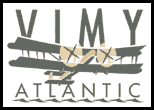The Curriculum
Mick Follari used various texts and personal encounters
to design the field work, and used the National Geographic
Geography Standards as well as other curriculum input
from participating schools. He worked with other teachers
to design a curriculum that will service students of various
grade levels.
The flight itself and the geographic regions we encountered
were linked through a curriculum loosely divided into
several areas of topical interest. These were such titles
as Science, Technology, and Math; Wildlife, Ecology, &
Natural Science; Culture, Language & History.
The students, though responsible for their specialties,
moved back and forth across these boundaries to provide
reports on flight science and navigation, wildlife and
environment conservation, regional history, flight history,
literature and cultural reference, geology, anthropology,
and other topics. The Educational Project internet pages reflect
the structure of the curriculum, and include cross-references,
overview, updates, and classroom suggestions.
Specific skills in each topical area were worked into
field projects that the students described and evaluated,
these field projects were then be integrated into a larger
work on a cross-disciplinary subject. The Field Team used
their direct experiences and interactions to create reports,
while the classroom students used those reports to complete
the educational puzzle.
The following are excerpted from an extensive curriculum
developed for the project:
In general form, geography students should be given the
opportunity to acquire the following skills:
- Ask geographic questions
- Acquire geographic information
- Organize geographic information
- Analyze geographic information
- Answer geographic questions
Overview
Field students transformed experiential learning adventures
into coherent written and visual reports for use in collaborative
projects. They developed skills in gathering important
information from direct experiences, local people and
experts, and photos, then develop communication skills
in sharing that information.
Classroom students worked creatively with exciting field
reports, photos, and data, developing skills in peer collaboration.
Classroom teachers participated directly with the field
students by joining the collaborative projects, or used
the resources posted by field students for their own in-house
projects, or for later input to the finished product.
The skill objectives were divided into three content
spheres. Learning experiences were then designed to use
these skills in projects that integrate and apply them
to real-life projects. The idea is that the learning experiences
are activities that integrate skills from different content
spheres; they are real-life activities that require specific
skills to achieve a larger goal.
Finally, fun, creative, collaborative projects were designed
that integrate these real-life activities into broader
work that demonstrates an understanding of the African
situation.
For example, wildlife tracking is a process activity
that integrates wildlife identification skills, flight
planning and logistics, an understanding of wildlife behavior,
weather, ecology, technology, a sense of the historical
use of aviation in wildlife management, and possibly population
math, and other skills.
Further, a report or magazine article on The Peace Park
Foundation integrates the experiences and information
gathered in wildlife tracking with an understanding of
the local demographics, settlement characteristics, local
culture, agricultural land use, economic development,
land management, and other reports. In this way the student
experiences a spiral upward from specific skills to the
relation of those skills in exciting real-world experiences,
to the integration of their experiences into creative
collaborative projects with students abroad.
In the example described above, classrooms had access
to our field reports, contacts, and photos and would use
those to lay out an informative article. They had creative
freedom to determine which photos best illustrate their
article, edited the field reports, combined them with
their research, and returned a finished product to be
included in the final product alongside other such works
from other classrooms.
The Web site will contain about 40 background essays
by various writers including Bill Graves, the former editor
of National Geographic. These will be part of the static
educational piece, as will stand-alone classroom projects
that could be adapted from the British curriculum to be
done with or without internet participation. The dynamic part
is the interactive one.
Various school systems, public and private, are expressing
interest in participating, so that a variety of educational
approaches were involved.
|


